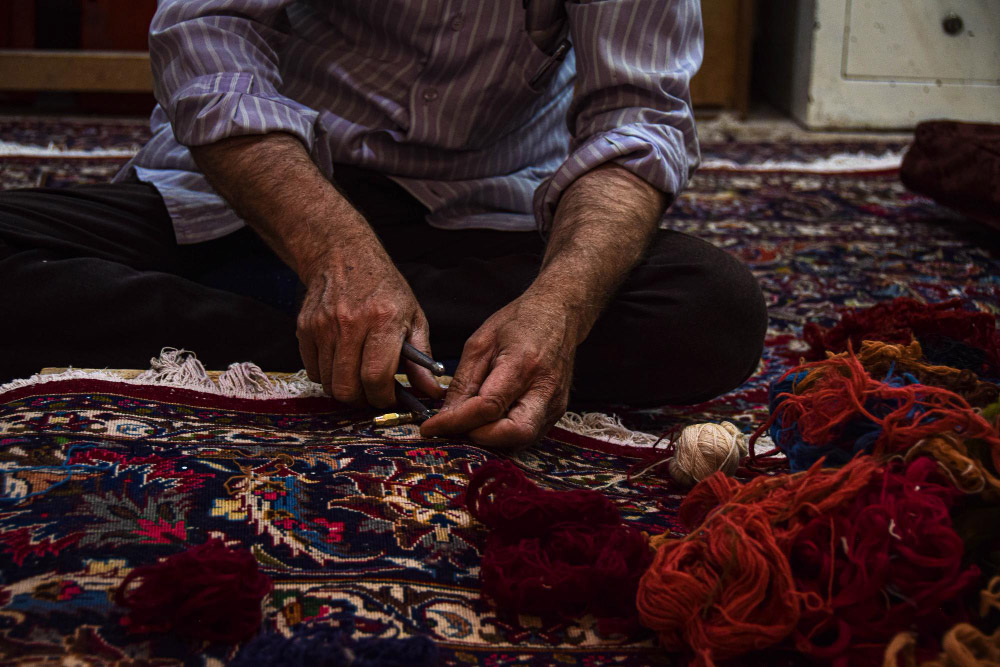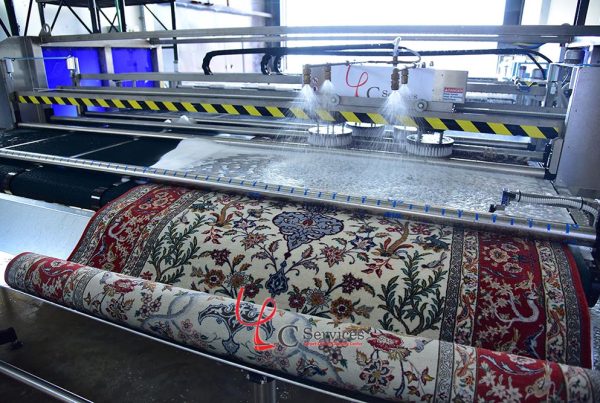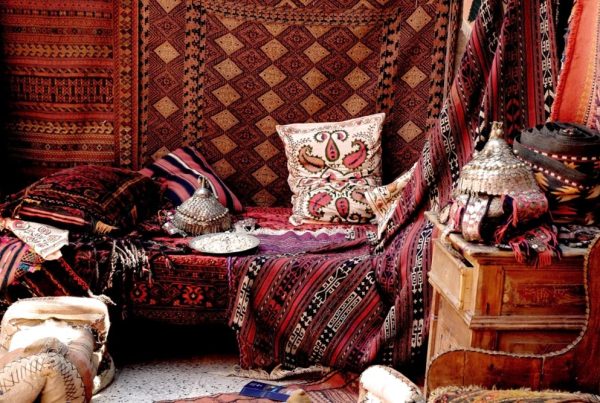True carpet restoration goes beyond cosmetics. It rebuilds structure, stabilizes fibers, and respects the authenticity of the original weave. When a valuable rug has missing foundation, threadbare fields, or distorted borders, expert restoration returns integrity and harmony to the textile. This guide explains best-practice methods used by conservation-minded workshops to rebuild carpets with precision and care, whether the piece is a family heirloom or a collectible acquired abroad. Homeowners in Lebanon and design studios in Beirut will find a clear framework for evaluating when, why, and how to restore.
Begin with a Conservation Mindset
The first decision in any restoration is philosophical: conserve as much original material as possible while achieving a stable, usable result. The aim is not to make an old rug look new, but to make it whole, safe, and truthful to its origin. This mindset guides every technical choice, from loom setup to yarn selection and finishing.
Comprehensive Assessment
A meticulous inspection determines scope and risk before any needlework begins.
- Fiber and dye identification: Wool, silk, cotton, or blends behave differently. Natural dyes may require lower pH and cooler water during any pre-restoration cleaning.
- Weave and density mapping: Knot type, knot count, and the relationship between warp, weft, and pile are charted to ensure compatible reconstruction.
- Structural health: Locate broken warps, loose wefts, weak guard borders, dry rot, and previous repairs that need reversing.
- Dimensional distortion: Bowed borders, puckering, and uneven tension must be corrected so new work sits flat and true.
Pre-Restoration Cleaning and Stabilization
Restoration locks in whatever soil remains. A professional, dye-safe cleaning and careful drying are essential so new fibers adhere and age consistently. Fragile zones are temporarily stabilized with basting stitches or conservation netting to prevent further loss during handling. In humid coastal settings such as Beirut, controlled drying prevents color migration and warping before rebuilding starts.
Foundation Rebuild: Warps and Wefts
When the foundation is missing or broken, technicians first re-create the skeleton of the rug.
- Warp replacement: New warp yarns are anchored to sound original warps with micro-splices or stitched knots. The diameter, twist, and fiber type are matched to the existing structure.
- Weft re-lay: Weft passes are inserted to re-establish lateral stability. Tension is tuned so pattern spacing remains consistent across the repair.
- Loom or stretcher frame: Mounting the rug on a small frame allows precise tension control, preventing “drumhead” tightness or slack undulations.
Pile Reconstruction and Pattern Recreation
Once the foundation is sound, the visible surface can be rebuilt.
- Yarn selection and dye matching: Technicians blend fibers to match luster, diameter, and hand. Color is matched in daylight conditions to harmonize with aged hues, not the rug’s original, brighter palette.
- Knotting method: Turkish (Ghiordes) or Persian (Senneh) knots are chosen to reflect the rug’s origin. Pile height is trimmed in stages so the new area settles and oxidizes closer to the surrounding field.
- Motif accuracy: Borders, medallions, and minor guard stripes are sketched from surviving sections. Symmetry, repeat spacing, and micro-variations (the “human hand”) are preserved for authenticity.
Guard Border and Selvage Reconstruction
Edge integrity protects the entire textile. Rebuilding guard borders and selvages prevents future unraveling and restores visual completeness.
- Overcasting and selvage wrap: Hand overcasting binds the last warps and wefts with matched yarn. For kilims and flatweaves, compact selvage wraps keep edges straight and resistant to abrasion.
- Corner geometry: Corners are aligned and tension-balanced so borders meet cleanly, avoiding the “expanded corner” look of poorly executed restorations.
Color-Run Reduction and Tone Harmonization
Historic rugs sometimes show dye migration, especially reds and blues. Carefully controlled reduction techniques may soften harsh bleed without erasing patina.
- Localized treatment: Work is restricted to affected zones with rinsing protocols that protect surrounding stable dyes.
- Tone harmonization: After structural work, a final grooming and light finishing can visually integrate old and new areas without artificial coatings.
Reversibility and Documentation
Professional restoration favors methods that future conservators can understand and, if needed, reverse.
- Material records: Fiber types, dye systems, and any adhesives used for conservation netting are recorded.
- Photo documentation: Before, during, and after images provide a clear provenance trail—useful for collectors and insurers across Lebanon.
Ethical Limits: When Not to Rebuild
Some rugs are historically important precisely because of their age and wear. Over-restoring can erase character and misrepresent the artifact. If the surrounding field is fragile, or if the loss tells part of the rug’s story, a conservative stabilization may be more ethical than a full rebuild.
Quality Control and Finishing
Finishing is where professional work quietly excels.
- Shear and level: Pile is trimmed in small passes so the reflection, or “bloom,” matches adjacent areas.
- Blocking: The rug is blocked to square and held until fully dry to lock in geometry.
- Final grooming: Light brushing aligns pile and reveals any irregularities requiring touch-up.
Aftercare to Extend Restoration Life
Post-restoration care is essential for longevity, especially in busy households in Beirut and in temperature-variant regions of Lebanon.
- Use a breathable pad: It reduces shear stress and keeps the rug stable on hard floors.
- Rotate seasonally: Rotation evens wear and offers early visibility into new issues at edges or traffic lanes.
- Sensible cleaning cadence: Periodic professional cleaning removes abrasive grit that can shorten the life of new knots and weft repairs.
Choosing a Restoration Partner
Seek workshops that demonstrate mastery of both weaving and conservation science. Look for evidence of yarn libraries, daylight color-matching, loom capability, and a commitment to documentation. Ask about philosophy: do they aim for honest restoration that blends respectfully, or “like-new” outcomes that erase history? The former approach better protects value.
Key Takeaways
- Structure first: Rebuild warps and wefts before any surface work to ensure stability and longevity.
- Match the language of the weave: Use the correct knot, yarn, and pile height so new work belongs to the rug.
- Edge strength matters: Guard borders and selvages protect the entire textile from future loss.
- Document and preserve: Choose reversible methods and keep a record for future caretakers.
Disclaimer
The methods described here are general best practices. Every rug varies by fiber, dyes, construction, and condition. Always test for colorfastness and structural soundness before intervention. Complex or valuable pieces should be evaluated and restored by qualified professionals.



